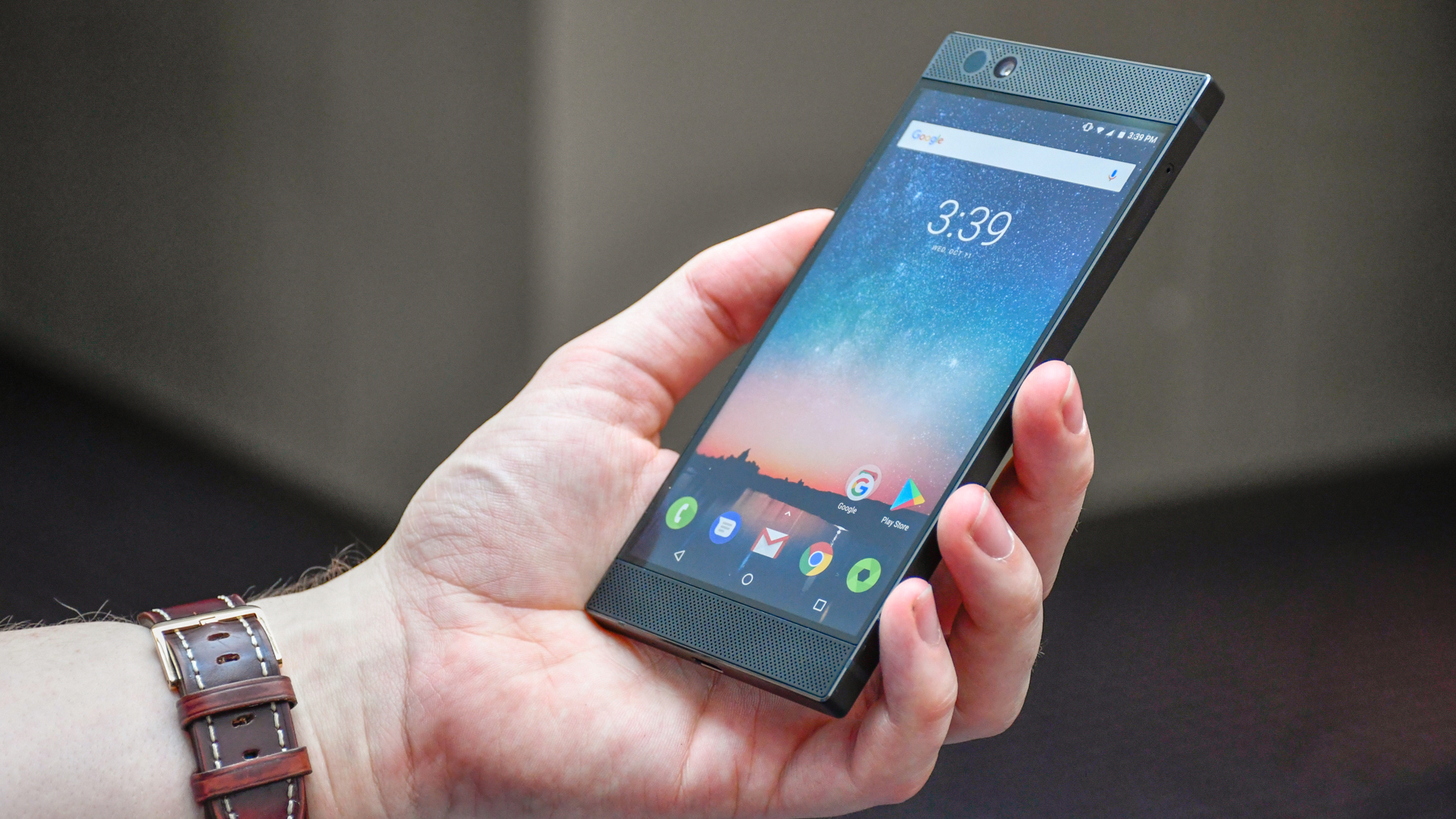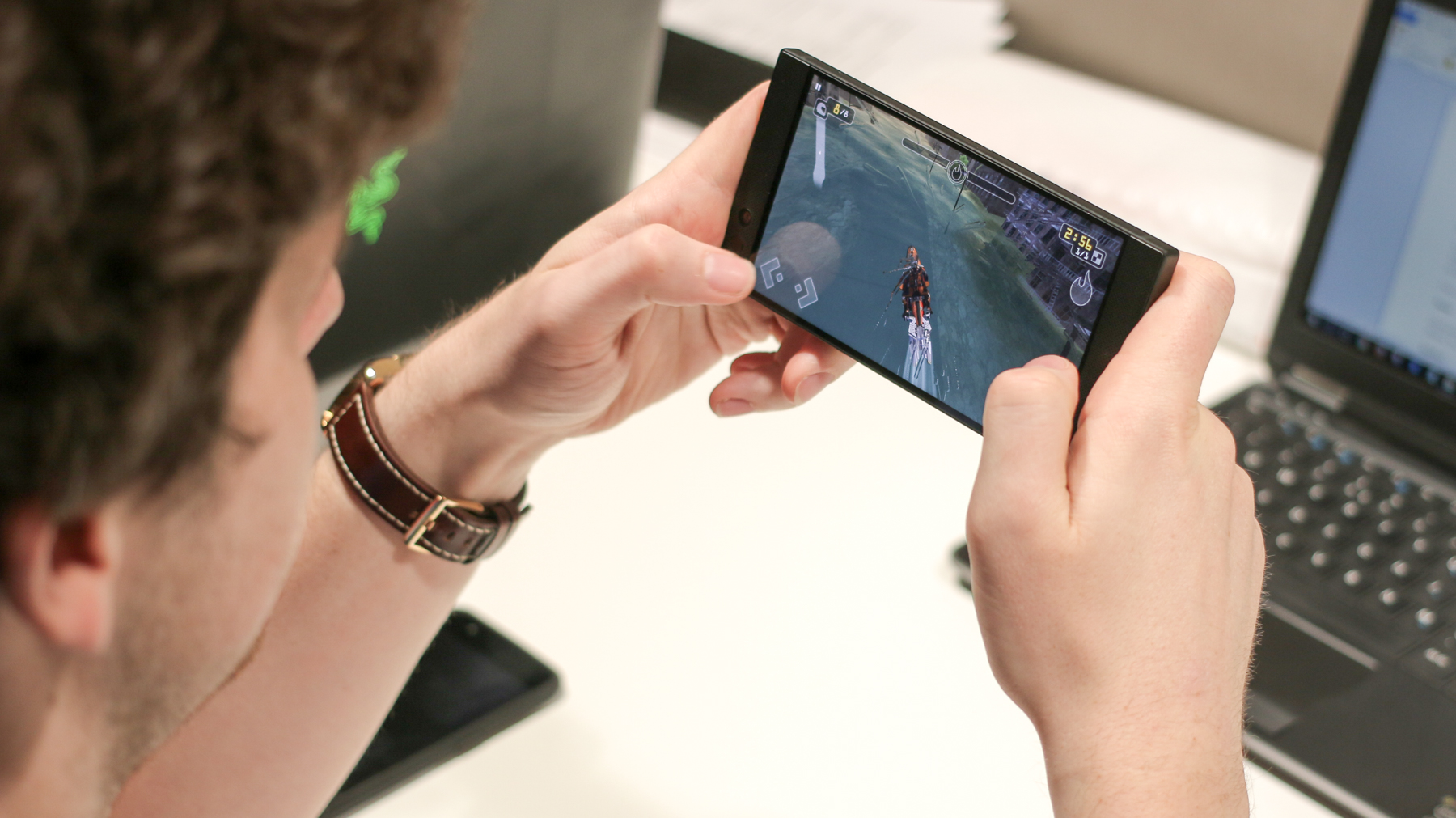Razer Phone vs Samsung Galaxy S8
Big screens and big power

The Samsung Galaxy S8 is quite possibly the most high-profile Android phone of 2017 and the one against which all other flagships must be judged, so we’ve put it head to head with the new Razer Phone.
This is a phone from a company new to handsets, but it’s got a lot going for it, including plenty of power, impressive speakers, a big battery and a promising screen.
Of course, the Samsung Galaxy S8 has a lot going for it too, enough for it to currently be sitting at number one on our best phones list, so can the Razer Phone really compete?
- Read our hands on: Razer Phone review
Razer Phone vs Samsung Galaxy S8 design
One area where the Razer Phone probably can’t compete is design. This is, of course, a largely subjective thing, but we can’t imagine its blocky, angular look will impress too many people, especially given the mostly plain black color scheme.
The Razer Phone comes in at 158.5 x 77.7 x 8mm and 197g, so it’s not small or light, and it has big bezels above and below the screen, though these are put to good use, as they hold the dual front-facing speakers, which are big and powerful by smartphone standards.
The back of the Razer Phone is mostly plain, other than Razer’s snake logo in black and white, and on the side you’ll find the power button and fingerprint scanner.

The Samsung Galaxy S8 has a completely different look, with tiny bezels above and below the display, a curved screen (the Razer Phone’s is flat), a metal frame and a slightly curved glass back.
Sign up for breaking news, reviews, opinion, top tech deals, and more.
At 148.9 x 68.1 x 8mm and 155g it’s also smaller and lighter than the Razer Phone, though its fingerprint scanner is on the back, which is an arguably less ideal position, and its single bottom-firing speaker can’t compete.
Get a better look at the Razer Phone with our hands on video
Razer Phone vs Samsung Galaxy S8 display
The Razer Phone’s display is more likely to impress than its design, as it has a 5.72-inch 1440 x 2560 LCD screen. That’s a QHD resolution, making it competitive with most flagships, but it also has something most phones don’t, namely a 120Hz variable refresh rate and a frame rate of up to 120fps.
That should make movement appear smoother on the screen, whether you’re scrolling through a news feed or playing a game.

That’s not possible with the 5.8-inch 1440 x 2960 screen the Samsung Galaxy S8 uses, because its Super AMOLED technology doesn’t support such high refresh rates and frame rates.
However, Samsung’s screen is marginally bigger and higher resolution than the Razer Phone’s, as well as being curved, and AMOLED has its own advantages, delivering great contrast and vibrant colors.
Razer Phone vs Samsung Galaxy S8 OS and power
Both of these phones have plenty of power. With the Razer Phone you get an octa-core Snapdragon 835 chipset, which is Qualcomm’s top-end mobile chip, and 8GB of RAM, while in the Samsung Galaxy S8 there’s either a Snapdragon 835 (if you’re in the US) or a comparable octa-core Exynos 8895 chipset elsewhere, along with 4GB of RAM.
So the main difference is the amount of RAM, and the Razer Phone has twice as much as the Galaxy S8, which could mean it will offer better performance, but there’s no guarantee of that, so we’ll let you know how it performs in our full review.

It’s almost certainly going to be fast though, and the Samsung Galaxy S8 is a very fast phone too.
Both phones run Android Nougat, but Razer has already confirmed that its phone will get updated to Android Oreo and we’d be very surprised if the Samsung Galaxy S8 doesn’t as well.
Both phones also come with 64GB of storage along with a microSD card slot, so they should have enough space for most users.
Razer Phone vs Samsung Galaxy S8 camera and battery
The Razer Phone has a 12MP dual-lens camera, with an f/1.75 wide-angle lens and an f/2.6 telephoto one. The two lenses let you get in closer to your subject with an optical zoom, though we haven’t had a chance to properly test out how good the camera is yet.
From our brief tests we can tell you that there’s not much to the camera app – it’s pretty much just point and shoot, which keeps things simple, but may put off more serious photographers.
The Samsung Galaxy S8 meanwhile has a 12MP single-lens camera with an f/1.7 aperture. That might sound less interesting but in practice we’ve found that it can take very good photos. There’s also a Pro Mode and a bunch of other shooting options.

Both phones also have an 8MP front-facing camera, though the S8’s has a larger lens opening thanks to its f/1.7 aperture than the f/2.0 one on the Razer Phone. That could mean that the S8’s selfie camera is better in low-light situations, but we’ll have to put the Razer Phone properly to the test to know for sure.
One of the highlights of the Razer Phone, at least on paper, is its 4,000mAh battery, as that’s larger than the batteries in most phones (though the recent Huawei Mate 10 and Huawei Mate 10 Pro match it).
The Samsung Galaxy S8 doesn’t, as it has just a 3,000mAh battery, but we found that in most use cases it would still easily last at least a day. We’ll let you know how the Razer Phone’s battery compares when we’ve put it through a full review, but Razer claims it lets you ‘play all day’, which sounds promising.
Razer Phone vs Samsung Galaxy S8 price
The Razer Phone is launching at $699 / £699 (around AU$890) SIM-free and the Samsung Galaxy S8 is $725 / £639 / $1,199, so they’re similarly priced. However, having been out for a while the Samsung Galaxy S8 can often be found for less than that.
Takeaway
The Razer Phone and Samsung Galaxy S8 have a lot of similarities and just as many differences. They both have big, sharp screens, lots of power, 64GB of storage and run Android Nougat, they also cost a similar amount.
However, the Galaxy S8 has a far more stylish design, and it has a curved OLED screen, while the Razer Phone has a flat LCD one (albeit one with higher refresh and frame rates).
The Razer Phone also has an extra camera lens and speaker, twice the RAM and a bigger battery than the Galaxy S8.
As for which is better, that could come down to what you want out of a handset, but the Galaxy S8 is a great phone. Stay tuned for our full Razer Phone review to see whether that’s also great.
- Whichever phone you choose, you'll want some of these apps
James is a freelance phones, tablets and wearables writer and sub-editor at TechRadar. He has a love for everything ‘smart’, from watches to lights, and can often be found arguing with AI assistants or drowning in the latest apps. James also contributes to 3G.co.uk, 4G.co.uk and 5G.co.uk and has written for T3, Digital Camera World, Clarity Media and others, with work on the web, in print and on TV.